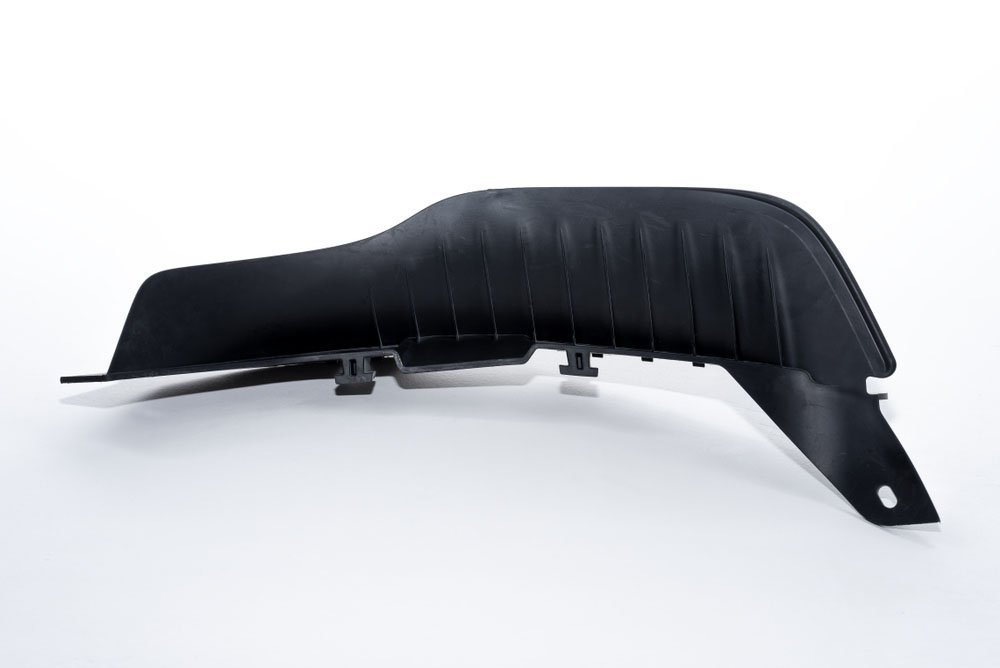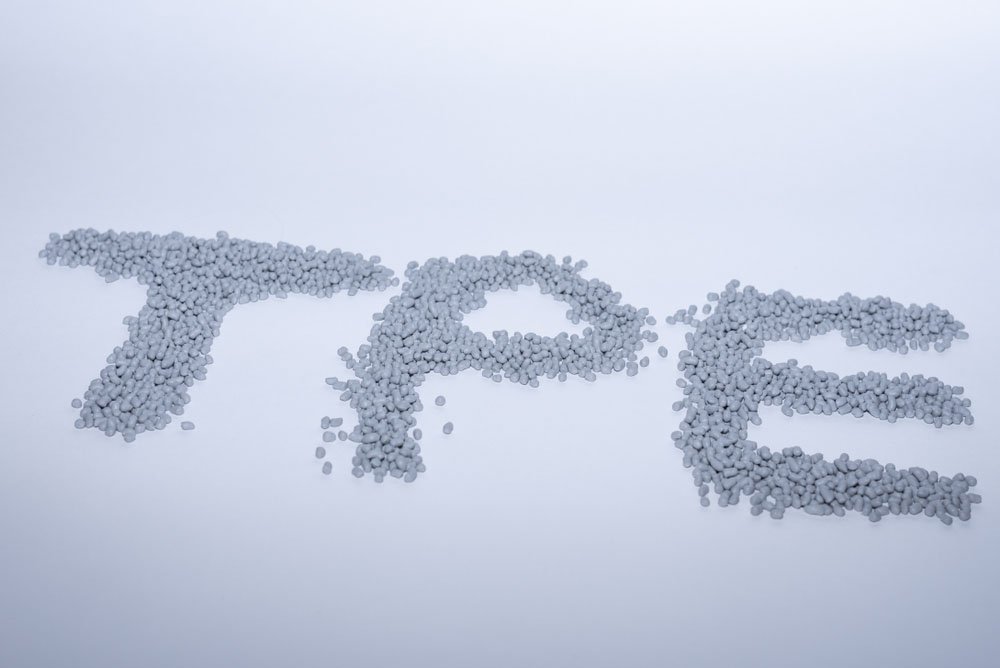Injection molding is pretty much standard for manufacturing consumer products. Especially those with complex designs and/or required in large quantities. The method is well established for conventional materials like plastics and metals. But what about those materials that are not quite conventional? In this article, we take a look at thermoplastic elastomers (TPEs). Many products that once used either plastics or rubber are today made with TPE. These special groups of plastics work well for injection molding. They may even prove superior in some aspects of the process.
The general principles of injection molding hold regardless of material. These are mixing, melting, injecting, product forming, and cooling. All these are essential parts of the process. Specific materials need some special considerations. This is due to some differences in the properties of the material. Having a fundamental knowledge of TPEs is important. This will help you determine the best way to mold into different products.

Thermoplastic Elastomers/ TPEs
Elastomers are polymers which have their chains crosslinked. At their service temperature, they have high flexibility. Their service temperature is usually higher than their glass transition temperature. In other words, they function below their glass transition temperature. Examples of conventional elastomers are polyisoprenes and polybutadienes. TPEs were born out of the need for thermoplastics with viscoelasticity. This gives elastomers the processability of thermoplastics.
Elastomers have come a long way since the first discovery. The work on the vulcanization of rubber in 1844 by Charles Goodyear marked the beginning of the journey. Since then a range of elastomers both natural and synthetic have come to light. Many of these products injection moldable. Although other methods such as casting and dip coating exist. For complex structures produced in high volumes, injection molding is more common.
They find use in thousands of products from tires to footwear to packaging. Most elastomers in the conventional sense are thermoset. This fact makes injection molding them a little less… fun. Here’s the reason for this. For a typical thermoplastic, you begin with pouring the pellets into the hopper. This can be a manual process or automatic depending on what you’re working with. These pellets are your plastics cut into tiny pieces to make heat distribution even. The pellets are then pushed along the length of the heated barrel by the rotating screw. This melts the pellets into a viscous liquid that flows into the melt chamber. This molten state makes it possible to fill the mold and achieve the design detail of the product. As long as you maintain the required temperature to keep the screw rotating and melt flowing, all is well. This is in the case of thermoplastics.
When dealing with elastomers which are thermosets, things are a little more complicated. Thermosets, for one thing, do not melt. This means rather than pellets you have to start with a resin. This liquid form is more difficult to transfer into the injection unit. Dealing with a liquid means there are more parameters to control. Examples of such parameters are pressure, flow rate, and temperature. This is one processing advantage TPEs have over elastomers. You can buy TPEs in pellet forms from suppliers. Injection molding of these pellets follows the same method as conventional thermoplastics.
Conventional elastomers harden by vulcanization. For example vulcanization of polyisoprene with sulfur at high temperature. Other crosslinking/curing processes can also take place at room temperature. Most of the vulcanization and crosslinking processes take minutes and sometimes several hours. This slows down injection molding a lot. Some manufactures can get around this by having detachable molds. This way the injection machine keeps running while the molds cure. This would of course incur more equipment cost. Either way, there is time or money on the crosslinking of the thermoset. TPEs remove this extra time for product formation in injection molding. The chemical process of crosslinking already happened during the production of the pellets. The type of crosslinking that happens in TPE unlike vulcanization, is reversible. So TPEs in the ready to use pellets for injection molding. This makes the whole process a much less fussy affair.
Although this are=ticle discusses TPE in general, bear in mind that there are different types of TPEs. You have the styrene-ethylene butadiene styrene (SEBS), thermoplastic polyurethanes, and thermoplastic polyesters. All TPEs generally combine two or more polymers that react together or otherwise. These are in the form of copolymers form or a physical blend of polymers. These polymers can be thermoplastics and elastomers which are then crosslinked. All the TPEs have in common, elastomer flexibility, and the processability of thermoplastic. The type of TPE used depends on several factors like cost and type of application. For example, some TPEs are safe for food contact while others are not safe for such applications. There are also other properties to consider water and chemical resistance.
5 upsides to Injection molding TPEs
(1) You can work with solid pellets:
These are easier to manage than resins. Filling the hopper is less messy or demanding. You have to control the amount of material you are feeding into the hopper in injection molding. This is true whether you are using manual or automated metering. Pellet measurement can be by weight or by volume. Transfer of material is easier without worrying about it sticking to the container. Liquid resins may need pumping and cleaning of containers. The liquid transfer is not as efficient as some material stick to the container.
(2) Recycling of Scraps:
In thermoset elastomers, vulcanization is an irreversible cross-linking process. Thermoplastic elastomers use a reversible crosslinking process. When heated above a given temperature, the cross-links break. This is temporary because upon cooling the crosslink reforms.
(3) TPEs are better for the environment:
Unlike the thermoset elastomers. It is possible to recycle products made out of TPEs. This is good for production and the environment. Recycling can be after use by consumers or during the production of scraps.
(4) No need for idle time in injection molding:
Many vulcanized elastomers need more time for the reaction to complete. In thermoplastic elastomers, this idle time is not required. The crosslinking has already occurred during the formation of the pellets. So the TPEs injection molds as regular thermoplastics.
(5) TPEs flow well in the barrel:
When you compare TPEs to plastics like polystyrene, TPEs flow better. High interchain mobility is characteristic of elastomers. This gives them their characteristic flexibility and toughness. The TPEs also have this property. This means TPEs flow at a range of temperatures. A degree or two change in temperature will not have an exponential effect on the viscosity. This is not so for plastics like polystyrene for example.
3 Downsides of Injection Molding TPEs
(1) TPEs have limited Recyclability
All polymers degrade with continuous heating. TPEs lose their properties over repeated heating cycles. They are not as resistant to heating as their component thermoplastics. So the amount of scraps recycled during injection molding isn’t limitless. Using a hot runner system reduces scraps altogether. So if you have the choice between a hot runner and cold runner injection molding. for this reason, you should choose the former.
(2) Products Only for low-temperature application
Injection-molded TPE products cannot function in high-temperature applications. The elastomer properties of TPEs tend to deteriorate at higher temperatures. Elastomers like silicone are desirable in applications such as baking and thermal insulations. Many of these are injection molded. So although TPEs can be injection molded into these various shapes. only low-temperature applications are useful. You can’t for example injection mold TPE into a non-slip baking tray like silicone.
(3) TPEs pellets cost more
TPE pellets are more expensive than conventional thermoplastic pellets. This is since they need more processing. The added cost is offset by the higher value of the product. The production rate increases if using a hot runner injection molding machine. The cost also varies for different types of TPEs.
The final choice you make on how to process TPEs depends on the type of TPE and the target product. The properties of a specific TPE varies with the combination of materials used. The conditions under which production occurs also affects the properties. Different manufacturers will specify the properties of the particular brand of TPE. Examples of relevant properties include melt flow index, melt temperature, and density. These properties are important in setting the operating conditions for effective injection molding. You should also bear in mind the additives used in the process. Different types of TPEs vary in their resistance to oil, water, and other compounds. Some processors introduce additives such as oils and plasticizers to improve the process. The types of additives that work fine with thermoplastics may not work with TPEs. Consider these factors before selecting the TPE to use for injection molding.
Some Quite Brilliant Injection Molded TPE Products

TPEs have been around for over 5 decades. TPEs are gaining increasing interest in industries. As consumers become more aware of the impact of the products they use on the environment. This has led manufacturers to find different ways to integrate TPE into products. These products serve the same purpose as their thermoset counterparts. The difference is they are thermoplastic. Let us look at some recent applications of TPE in injection molded products.
Footwear is one industry that has seen a rise in the application of TPEs. For many years thermoset elastomers find use in footwear. Their mechanical properties give cushioning, comfort, and durability. This is especially important for sports shoes where they are key to performance. One recent popular application of TPE in footwear is the Nike Court Flare. These are tennis shoes designed by Aaron Cooper for Serena Williams. The flexibility, lightweight, and feel of TPEs achieved tennis shoes with a good fit. It allows ease of movement and good skin contact. Looking at the part, it is an injection moldable product.
Another interesting application of injection molded TPE is the production of earbud tips. These are usually made using elastomers. These tips come in contact with the ear and so need to have a good feel. They need to be soft and non-irritant. Also, these are materials that are either lost or replaced often. This means they need to recycle to be more sustainable. Producing them out of conventional elastomers would give the required properties for use. After use recycling them becomes challenging and costly. So making these tips out of TPE is more sustainable. An example of such a product is the AZLA elastic TPE soft ear tips. These have so far had good reviews for style and comfort.
These are a couple of examples of applications of injection-molded TPE plastics. There are more examples beyond these. TPE can injection mold into other products you would mold conventional elastomers into. The only limitation is the application at elevated temperatures. Yet, considering the broad range of applications. Many of these do not need exposing the TPEs to high temperature, I’d say there is plenty of room for TPE.
TPE Brands
Various companies have discovered different types of TPEs. Each of these target different markets. The table below gives some known brands of TPEs and their manufacturers.
| Supplier | Brands |
| Basf | Elastollan |
| DuPont | TPSiV |
| Sabic | NORYL |
| Dynasol | Calprene SEBS |
| Eni Versalis | Septon |
| Ariaprene | Ariaprene |
Conclusion
TPEs make the injection molding of elastomers less cumbersome. These hybrid materials combine the elasticity of elastomers with the processability of thermoplastics. Their use spans different industries from footwear to electronics. The injection molding of TPE does not vary much from that of conventional plastics.
Image of Earbuds made by Injection molding TPE.
Reference links

